The traditional cuisine of Sardinia
Tutti gli articoli
Tutti gli articoli
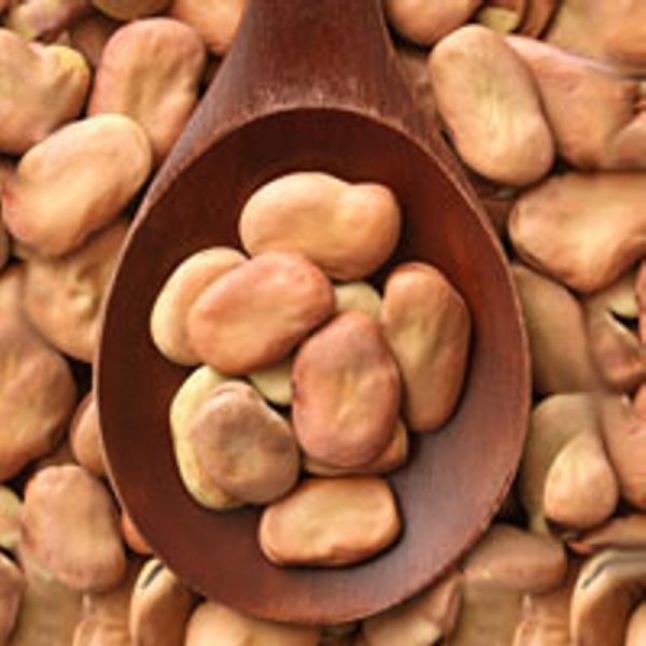
01 December 2015 The Sardinian Favata
Favata is a typical course of Sardinian cuisine, whose origin dates back to the lean culinary art of the Island. Very far from the typical recipes of the gastronomic literature, this food represents an unique course, born for satiating the hunger among the less well-off social classes. But, the simple and rustic composition defines the typical taste of the people’s cuisine.
The basic ingredient is represented by fava beans that must be soaked into lukewarm water, preferably for the whole previous night compared to the preparation of Favata.

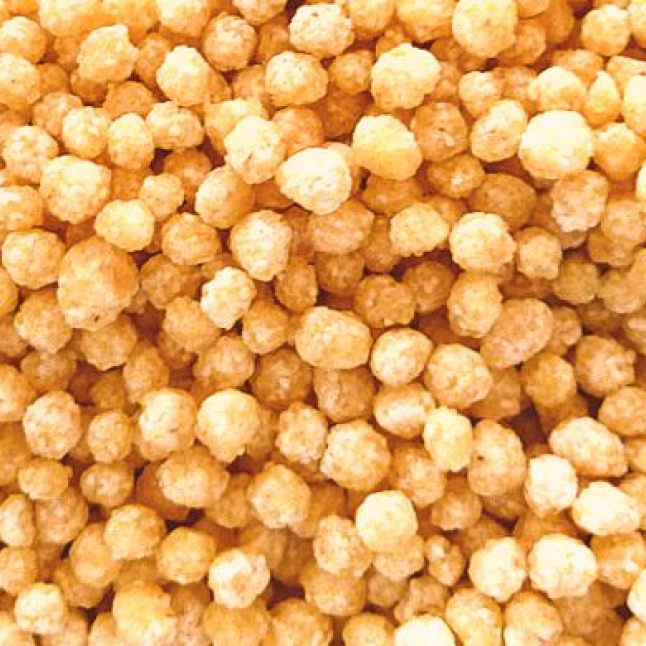
01 December 2015 The fregola in all its variety
Not everyone knows that fregola – or fregula or freula – was the first kind of pasta that was created, and then they were born the other types, such as the pennette, the spaghetti, the fusilli, etc.
However, people know the origin: indeed, it is thanks to the Arabs that this kind of pasta came in the Island. This population allowed to taste and prove the particular flavor of their very famous course, the cuscus, and Sardinian people gave another version of this dish, creating fregola.

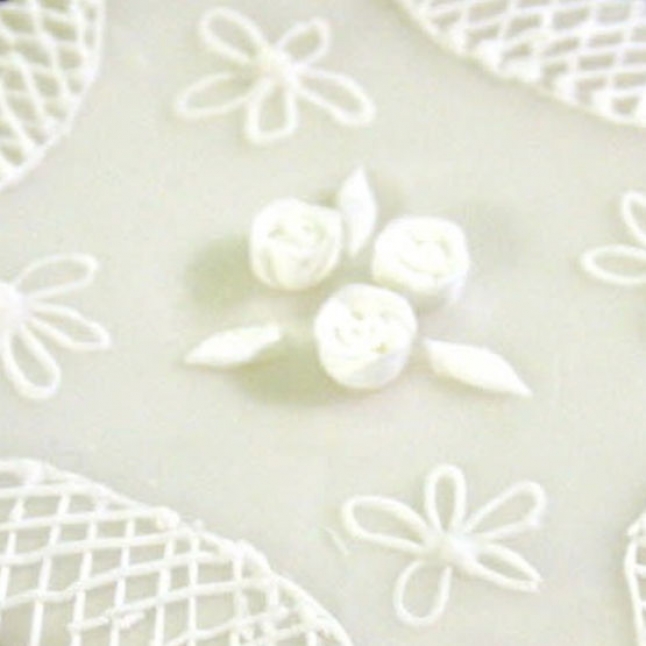
01 December 2015 Almond and Sardinian cakes
The production of almond in Sardinia has Medieval origins. The diffusion of the well-known dried fruit is proud of an ancient and far propagation up to the territories of Central and West Asia and those unexplored of the current China.
At present, among the southern regions devoted to the cultivation of almond, Sardinia excels for its huge surface of almonds that corresponds to 3500 hectares.

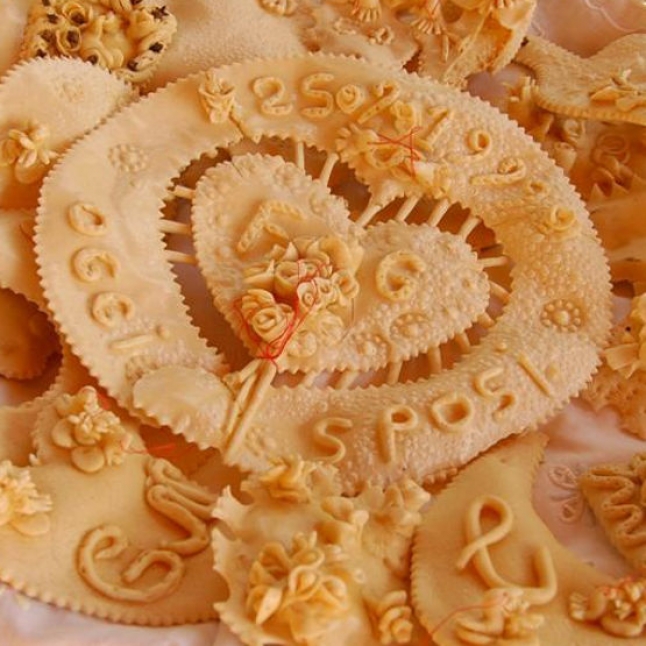
01 December 2015 The wedding "fruttera"
The bread in Sardinia has always been the basic food supply, seen as an essential and a nutritional food celebrative of religious services, both popular and catholic.
From ancient times home and artisan bakery, takes place according to cyclical patterns determined by familiar economic necessities and the need of a collective conviviality during the festive occasions.
The story of the handicraft bread is remote: the Neolithic was the period of the discovery of the cereal crop, whose production will be developed to prehistory.

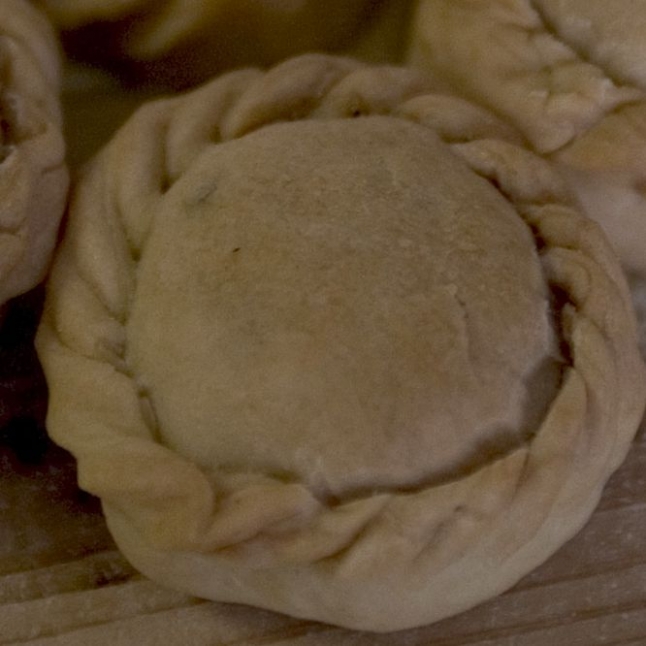
01 December 2015 Sa Panada: one of the typical dishes of Sardinia
Sa Panada is an unique dish and it is representative of an area of Sardinia: Assemini. Distinctiveness is such because it represents the first and the second course, this one characterized by the presence of meat or fish. Furthermore, the dough of sa Panada indicates a delicious kind of bread, too. Indeed, it is told that, in ancient times, some citizens of Assemini cooked some panade very big, in order to serve them as a bread.
The traditional Panada is prepared with eels and peas, both because these two ingredients adhere perfectly each other and because in Assemini there was a basin and in that area they lived above all families of fishermen. The variations, alike appreciated, are prepared with potatoes and meat of chicken or pork or lamb or rabbit. Some women prefer sa Panada with the meat of horse or that with vegetables. But, dried tomatoes, garlic and parsley are inevitable. The "equipment" for working are a terrine, a rolling pin and some dishes suitable to this type of food: iron glaze dishes that have not to present some cracks, because they could be detrimental during the cooking. Or it is perfect to use some single-use aluminum baking trays.

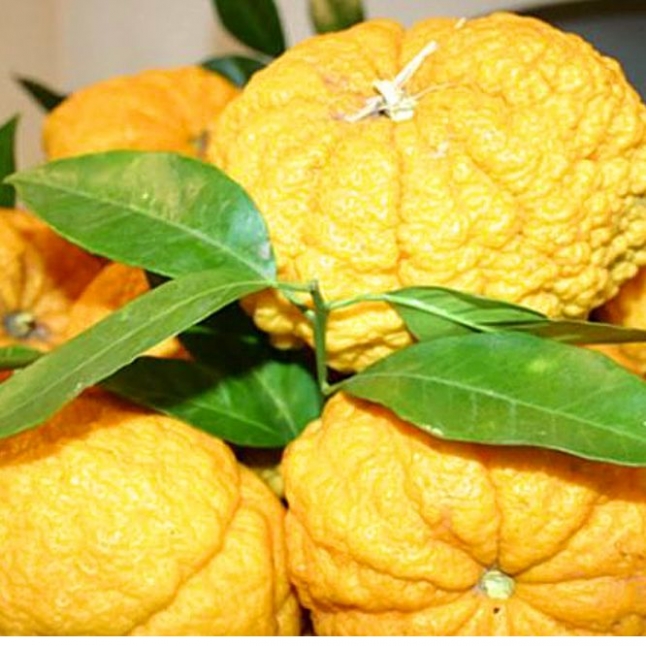
01 December 2015 Sa Pompìa
Sa Pompia is a citrus fruit native of Sardinia, with a thick and rough peel, that was born uniquely in the territory of Baronia, between the provinces of Ogliastra and Nuoro.
But, the places, where it is mainly spread, are Orosei, Torpé, Posada and above all Siniscola.
It is here that the cultivation of this fruit, very ancient, developed in the 90s of the last century thanks to the decision of implanting an extensive plantation such that it could allow an unique evolution come from the Sardinian agricultural lands.

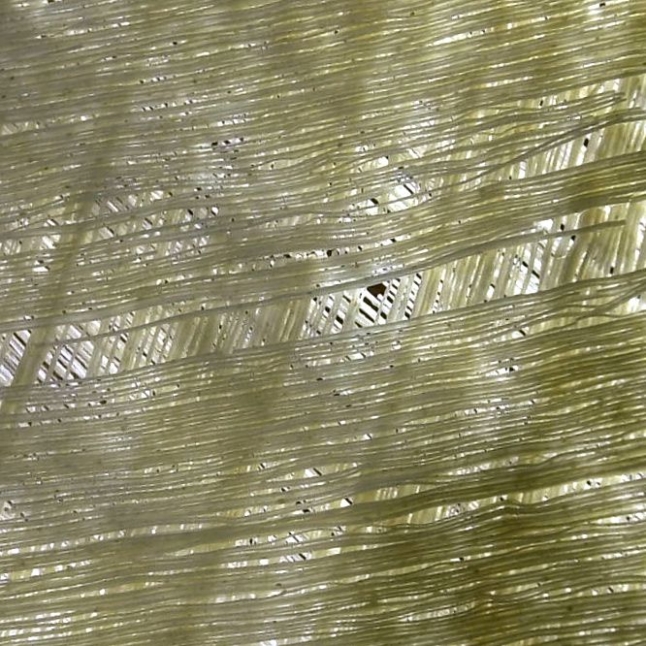
01 December 2015 Filindeu: the God's hair
Typical of the food culture of Nuoro, the filindeu is one of those richest dishes in value and tradition in the Island. A recipe unique in its kind. Its complicated production technique and the various steps that are required to get the finished product led him to be a dish made, actually, only by the most experienced hands of women from Nuoro.
The origin of its name can be traced by the Arabic word fidaws, which means "hair" (the pasta is, in fact, is rather fine and vaguely reminds the hair). This term, after the Muslim conquest of Spain, changes and we find it in the form of fideos, then changing, in archaic Sardinian, of findeus and findeos. Hence it is finally passed to the final term of filindeu.
The fact that this thin pasta looks like hair and that was prepared in particular festivities, for Easter, but also and especially for the festival celebrated in Nuoro in the rural sanctuary of San Francesco di Lula, have led some to call it "hair of God."


01 December 2015 Eating in Sardinia
Crossroads of the Mediterranean, frontier between the Islamic and Christian worlds, Sardinia has been for millennia the center of cultural and linguistic exchanges.
As well as in Sardinia it is easy to find influences of other Mediterranean languages, all the same happens about the culinary traditions.
With a varied food heritage, the cuisine prefers strong and tasty flavors, thanks to the excellent quality of raw materials guaranteed by the mild climate.

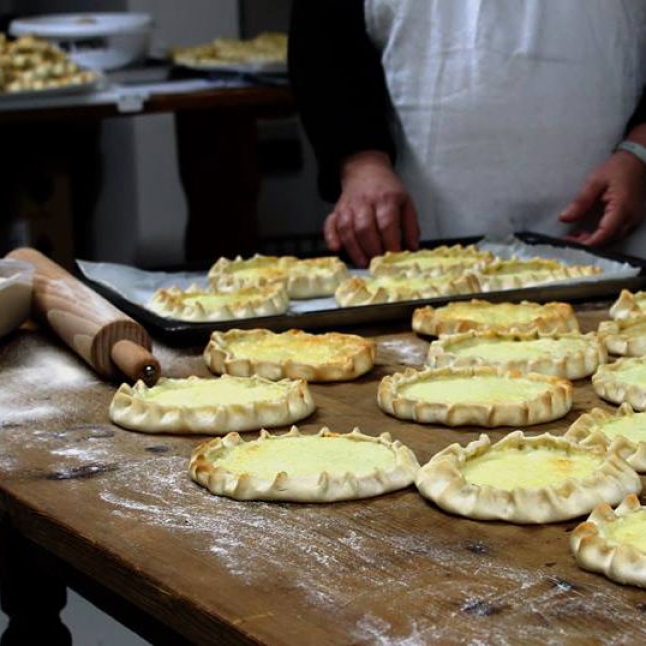
01 December 2015 Taccas, Sabores de Su Tempus
From the entrance into the pub, atmosphere is marked on the genuine taste for a not very far past, where the equilibrium of things had the smell of wood, cork and paper and the colors of fall, land, modest kitchens and of the welcome of a numerous family.
This is the pub Taccas, Sabores de Su Tempus, a characteristic inn situated in Cagliari, that found, in the area of Corso Vittorio Emanuele, the historic location ideal to hosting a format of local cuisine that, firstly, represents conviviality, rediscovery of plain dishes with a native craft, both in the meals and in the design of this pub.
From Siniscola to Milano and from Milano to Cagliari, Taccas tells about itself, through the words of the owner, Gabriele Ponsanu, who with his sister, Giovanna, from the last spring until now led Taccas towards the fame of the movida in Cagliari and they let the curious customers reconsider, for the dinner, the frantic rhythms for spending a night together with own friends in the center of the city for discovering some ways of tasting, appointment and foods in the sign of economy and tradition. A format that was not unnoticed, as Gabriele tells us, not even to the pages of Vivi Milano, to the guidebook Gambero Rosso and to the London Evening Standard.

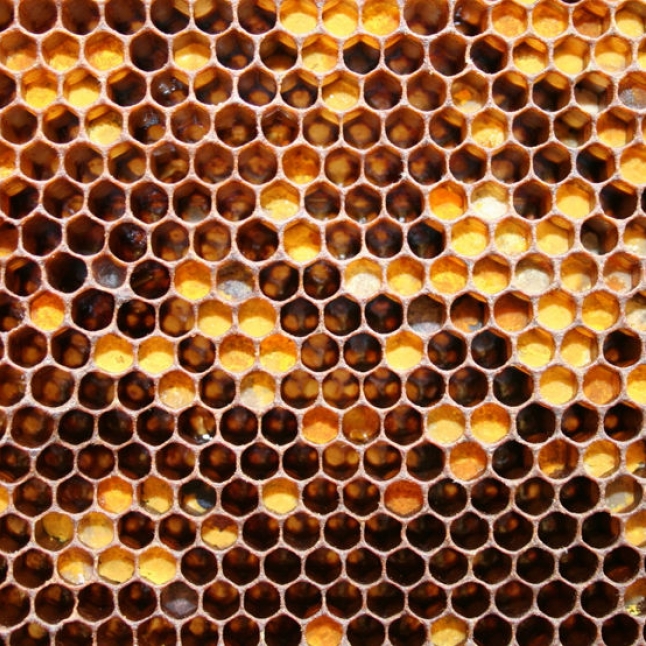
01 December 2015 Bresca Dorada, a friendship with Nature long more than thirty years
Surrounded by the uncontaminated Mediterranean flora of the territory of Sarrabus and protected by the strands of Costa Rey and by the slopes of the Monte Liuru, the firm of "golden honeycomb", that, in the 80s, from the transhumance of bees gleaned the first precious products registered as Bresca Dorada, tells to the readers of Sandalyon an enchanting business path rooted in the territory.
It is Paolo Melis, the partner who founded the company together with two other members, that describes the past and the present of a project that privileges biological and quality, nature and the business life immersed in the countryside of Muravera. Jams of oranges, lemons, prickly pears, quinces and mandarins, and spirits, myrtle liqueurs and aromatized salt are some of the products that, thanks to the skillful hands of fifteen or so members of Bresca Dorada, come to the houses of the whole Island and of the national territory up to catch the Japanese banks polished tastes.

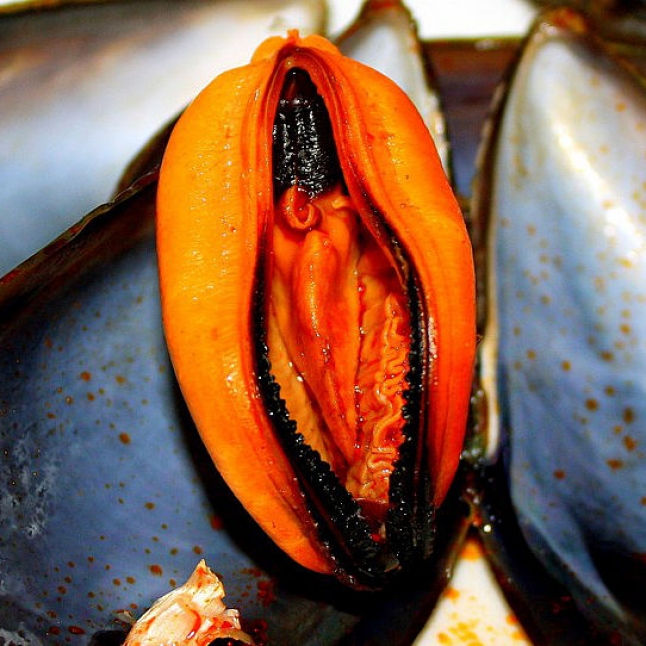
01 December 2015 Mussels: a passion all to be shelled
Low in fat, high in protein and iron, the Mytilus galloprovincialis, the mussel that delights the inhabitants of the Mediterranean, is a thriving industry in Italy and in particular in the southern regions.
Bred especially in Taranto - from where comes at least a quarter of the hundred thousand tons produced annually in Italy – in Sardinia mussels are a culinary tradition among the most popular, especially in the coastal districts of Olbia, Cagliari and Oristano.
In the town of Gallura the mussel farming it was imported right from Taranto in early twenties. The area of the Gulf of Oristano teems with hatcheries at sea and it even houses a natural production in the valley of Marceddì, in the unique system of ponds of San Giovanni and Santa Maria.
Also the town of Cagliari recognizes as their own vocation to shellfish farming: in the consortium of Santa Gilla are enrolled one hundred twenty citizens; not counting the squatters, more than a hundred families, then, work in the lagoon. In Sardinia, currently, the mussel farming is the main activity of breeding of aquatic species; the geographical spread of productive settlements is remarkable, as shown the annual output of ten thousand tons of tasty shellfish.

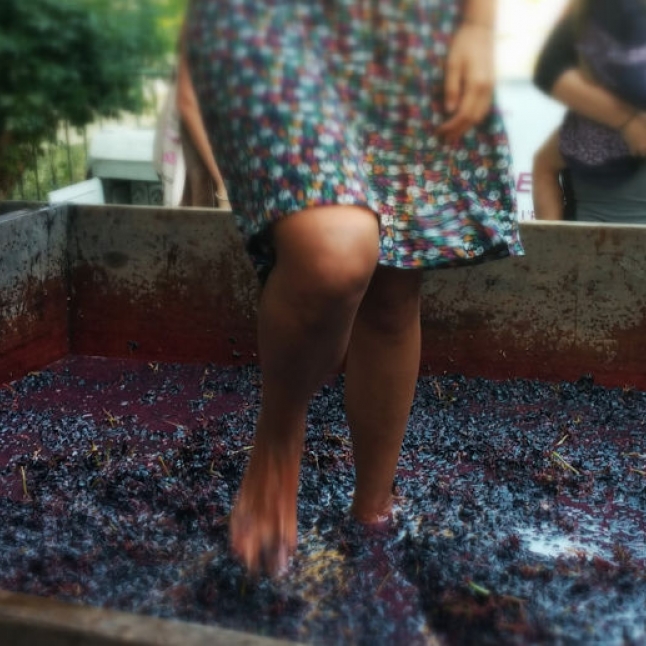
01 December 2015 FreGola: il food blog sardo “on the road”
Pochi sanno farlo con la naturalezza di chi fin dall’infanzia ha sempre avuto la passione per la cucina, i viaggi e il confronto con culture e luoghi geografici differenti. Con questo spirito lieve ed appassionato nasce FreGola, blog tutto sardo gestito da un ingegnere con il vezzo della buona cucina che guida ogni settimana centinaia di followers alla scoperta dei profumi dei prodotti locali ed extraisolani e degli aspetti plurisensorali dell’ esperienza enogastronomica.
Sandalyon ha incontrato Elisabetta Di Cesare, blogger e ideatrice di FreGola, fornelli e macchina fotografica alla mano:
FreGola è un blog che le ricette non solo le descrive ma le racconta. Come nasce la passione per il buon cibo e il contesto che ne circonda e arricchisce la preparazione?
Da che ho memoria ho sempre trafficato in cucina: da bambina mi affaccendavo ad aiutare mia madre ai fornelli e guardavo incantata le mani forti ed esperte di mia nonna confezionare ravioli e pardulas. Ho avuto delle ottime cuoche di riferimento in famiglia, ed anche adesso che sono cresciuta, affondare le mani negli impasti che profumano di farina e lievito mi rievoca questi ricordi.


01 December 2015 The rituals of blood in Sardinia
[...] In Arasolè bread were eaten, mostly bread. Then, according to the seasons, other things: in the winter, bread and lard; in the spring, bread and ricotta cheese; in the summer, bread and tomatoes, which were called "lobsters of the poor"; the autumn, bread and prickly pears. The poor lived off only the autumn, so called " fatten poor autumn ". [...]
So Francesco Masala, in his only novel "Those white-lipped", dramatically describing a poor village of Sardinia, represents the poor people eternally starving, just "those white-lipped," tormented by the greed of that food reserved for the rich, whose lips were rather red, as well as the porporine lips of the girls celebrated passionately in many popular ballads.
This yearning desire of flesh and blood was due to the very high nutritional value of the blood and its fortifying properties. Before that malaria was wiped out, along with the scourge of hunger, anemia was, in fact, widespread and feeding meat was its main remedy. Indeed, to consume the still palpitating liver of the animal just slaughtered, just scalding it on the coals, was considered a panacea.
Sardinians today still continues to prefer fresh meat, which is consumed before it is even begun the process of maturation that, by relaxing the nerves and tendons, softens the muscles and increases the value of the cut.

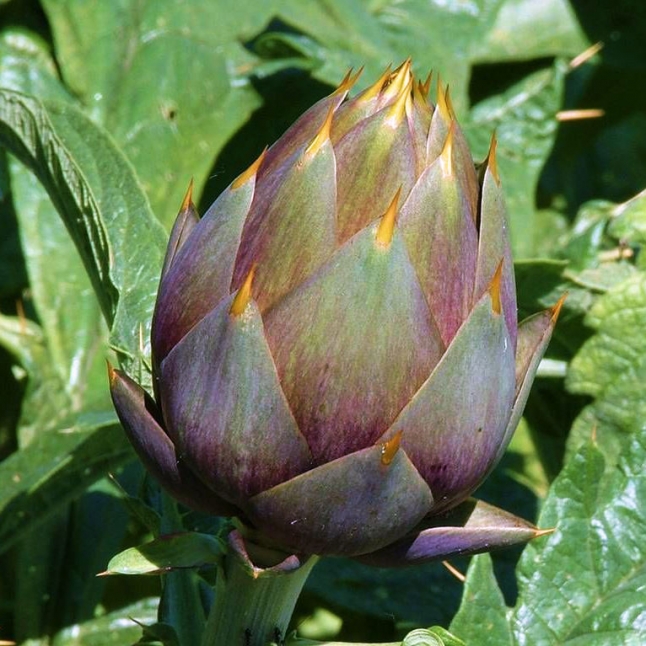
01 December 2015 Artichoke: from plantation to its properties
The ideal climate for artichokes is mild and temperate. So, it is better the season autumn-winter in the Mediterranean areas and spring-summer in those colder.
Temperatures that are lower to -10°C are dissuaded for artichokes, because they are detrimental for them.
Normally, at the end of the spring season, experts begin with the preparation of the land, in order to giving a break from water during summer, and then they begin again in autumn.
The phase of harvest of artichokes happens between January and February. Where climate allows that, experts resort to a kind of plantation that is made in a period different to that usual: water is applied in summer – in July – and the harvest is moved up in October.

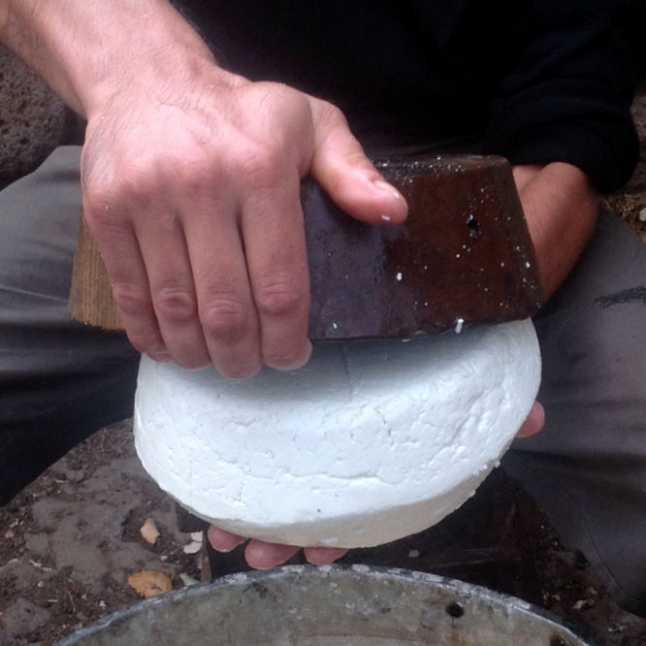
01 December 2015 Artisanal cheese by Salvatore Ledda
The plateau of Giara, at a height of six hundred meters, in the heart of Sardinia, there are still those who produce an excellent cheese with the same techniques that were used hundred years ago.
Salvatore, Tore according to his friends, managed to maintain and preserve this centuries-old knowledge and revive in our time the ancient tradition of cheese production.
Cheese is one of the elements that have always characterized the cuisine of Sardinia. A flagship and a product of excellence in the tradition and Sardinian cuisine.
It is a unique experience to know and follow the gestures and the steps that mark the transformation of milk into cheese. There is involved so much passion and wisdom. Archaic gestures are identical for every shepherd, etched in the mind, which alternate the deepest silence.

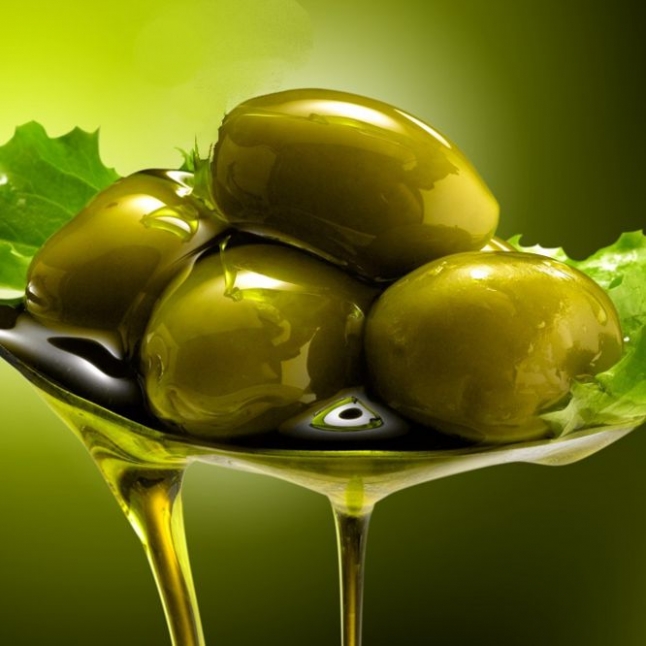
01 December 2015 The Sardinian olive oil
Olive groves are spread everywhere in Sardinia. The combination island-olive is inextricably linked. It is impossible to think about this land without the presence of olives and wild olive trees, shaken by the wind, in the rolling hills, down the slopes and along the valleys. Their widespread presence in many areas of the territory, (from plains to the higher hills), meant that the oil and oil products would become important in the Sardinian cuisine from ancient times.
Olive is a very ductile food and for which is used a lot in the first dishes but also in the seconds. The olive in oil, with the most diverse recipes are one of the starters that never fails in the most important lunches and dinners.
Immersed in brine for a few days, or packed in oil with garlic and parsley, mashed and seasoned with vinegar or salted and baked, stuffed, crushed and chopped up to obtain a spreadable cream; there are really many ways through which the olives can be served in the Sardinian tables.
But it is the product of their squeezing who consecrated internationally the region of Sardinia, not so much as the largest producer of oil, but certainly as one of the producers of best quality.
If olives are appreciated, Sardinian oil is even more and it can easily be considered one of the best oils of Italy.
In fact in 2015 the better national extra virgin olive oil belong the IGP Tuscany, the DOP Terra di Bari and the Dop of Sardinia. It is established to the panel of professional tasters of the thirteenth edition of the "Sirena d'Oro ", a national competition reserved for extra virgin olive oils.

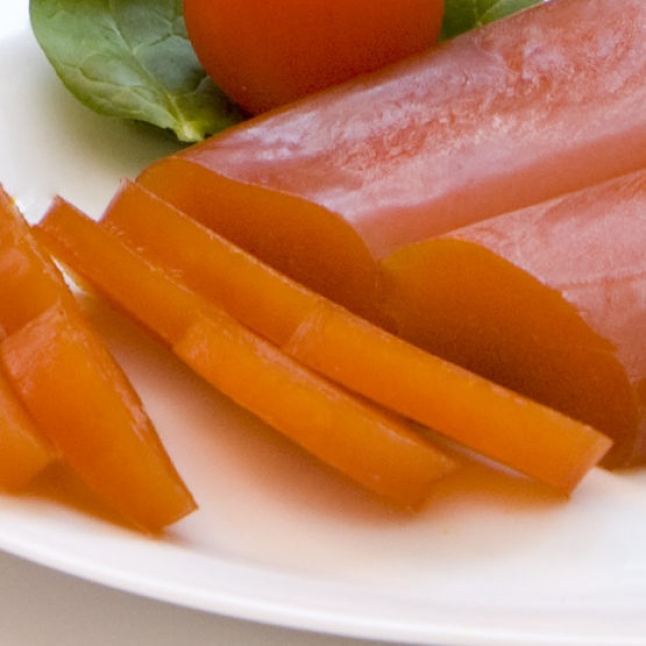
01 December 2015 The Sardinian bottarga
Mediterranean caviar, gold of Sardinia, sea-smell dust amber, strong flavor, slightly bitter, brackish, it does not allow for half measures. You love it or you hate it.
Eaten as a starter or, in the tradition of Cagliari, as a spaghetti sauce, is rich in Omega 3 and protein and it also contains squalene, steroid useful, it seems, to nourish the skin, relieve joint inflammation and to strengthen the muscles.
This is the bottarga, a delicacy food Sardinian coming by the thousands of eggs produced by the mullet roe, salted and dried by traditional methods.
The best known kinds of bottarga are the mullet and tuna ones. Either kinds are found in commerce both in egg sacks, whole pieces constituted by the undamaged ovarian sacs, similar to an amber ham, and in powder, less expensive but of lower quality.
